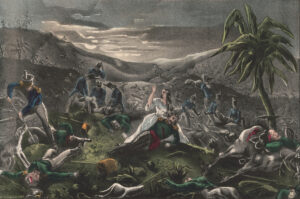Thoughts on History
For more than twenty years, my late husband and I lived in Canada. Although we maintained our American citizenship, we lacked the residential requirements necessary to cast an absentee ballot in U.S. presidential elections. Accustomed as we were to this country’s republican form of government, Canada’s parliamentary system took some getting used to. Not being citizens, we could not vote there either, of course–a state of affairs that taught us something about “taxation without representation.”
Many Canadians follow American elections quite closely. Those who do are well informed about the candidates and issues,but are often baffled by certain facets of our election process, particularly the role of the electoral college. As an American, I was asked repeatedly over the years to explain how that body worked and the rationale behind it. One November, I was even invited to a party on election night to serve as the official “color commentator” on the electoral vote. There I sat, never having cast a presidential vote myself, pontificating on the whole process. Finally being able to vote was, therefore, one of my biggest thrills on returning to this country. Our system may be a bit confusing to outsiders–and many insiders as well–but it has gotten the job done admirably, with a little fine tuning, for more than two centuries now.
On November 5, Americans will, for the fifty-second time in U.S. history, go to the polls to elect a president. In some ways,the first two elections–in 1788 and 1792–served as warm-ups to see how the system outlined in our new constitution would work. Unopposed for the office, George Washington was selected unanimously by electors from the various states. By 1796,however, things had changed. Not only did no candidate elicit the kind of support Washington did from his fellow citizens,partisanship had also reared its divisive head. This year’s election, therefore, marks the bicentennial of America’s first two-party presidential contest. Beginning on page 24, John Ferling enlightens us on the details of that election and on the performance of the electoral college in its first real test.
Also in this issue, Jerry O. Potter recounts the terrible disaster that befell hundreds of Union soldiers who were being shipped home on the steamer Sultana at the end of the Civil War, having already endured the hardship of being held in the South’s Andersonville and Cahaba prison camps.
Peter Harrington shares with us little-known images of World War I that artists created for The Ladies’ Home Journal.Published in a monthly series during 1918-19, these paintings gave Americans who were trying to comprehend a new kind of warfare a better appreciation for the sacrifices made by our troops “over there”.
When the remains of many American World War I casualties could not be identified, one of their number was selected for burial in an Arlington National Cemetery memorial now known as the Tomb of the Unknown Soldiers. Roger Bruns traces the history of this memorial, which has since, sadly but fittingly, been expanded to include the unidentified dead of the conflicts that followed the “war to end all wars”.
The turbulent, post-war 1920s was captured as nowhere else in the writings of F. Scott Fitzgerald, born one hundred years ago in St. Paul, Minnesota. Edward Oxford examines the life of this giant of American literature whose writings created many of the images associated with the “Jazz Age”.
And, in our final article, James Kushlan describes the colorful meeting this past summer of two symbols of America’s sailing navy–the USS Constitution and the US Brig Niagara–in Boston Harbor, part of a prelude to a two-hundredth birthday celebration for Old Ironsides scheduled for 1997.
Margaret Fortier is the editor of Women’s History and American History magazines and a historian with extensive experience in research and writing for historic sites and museums.




